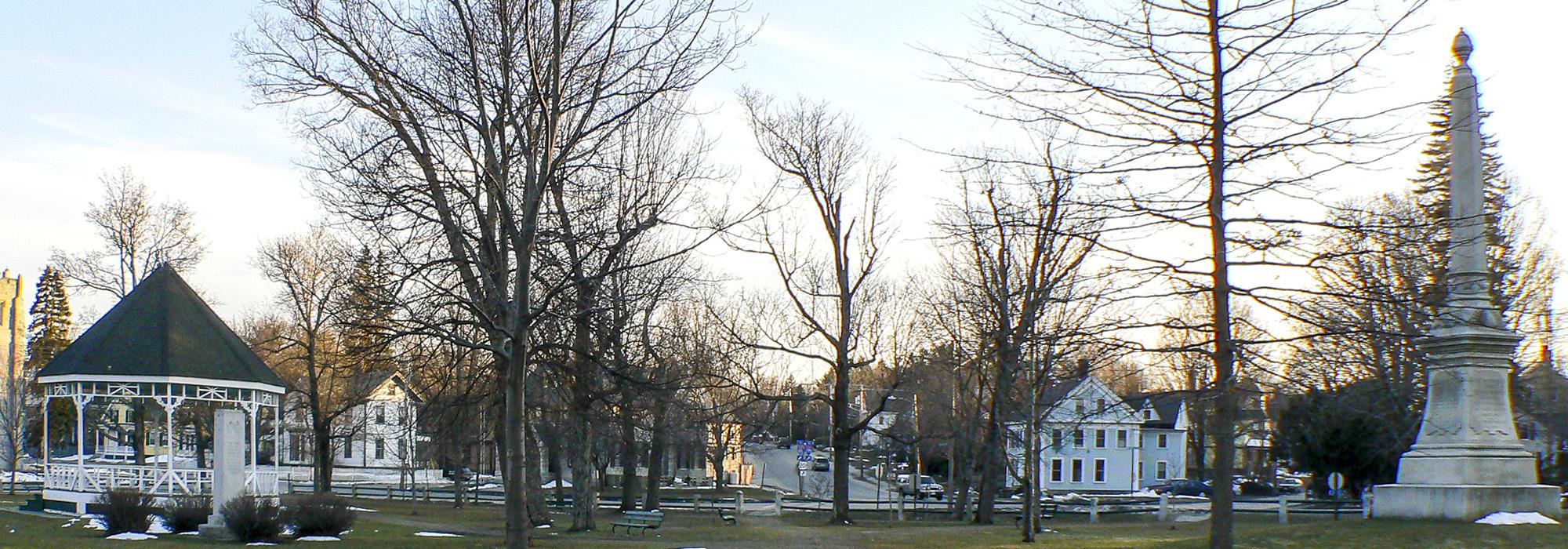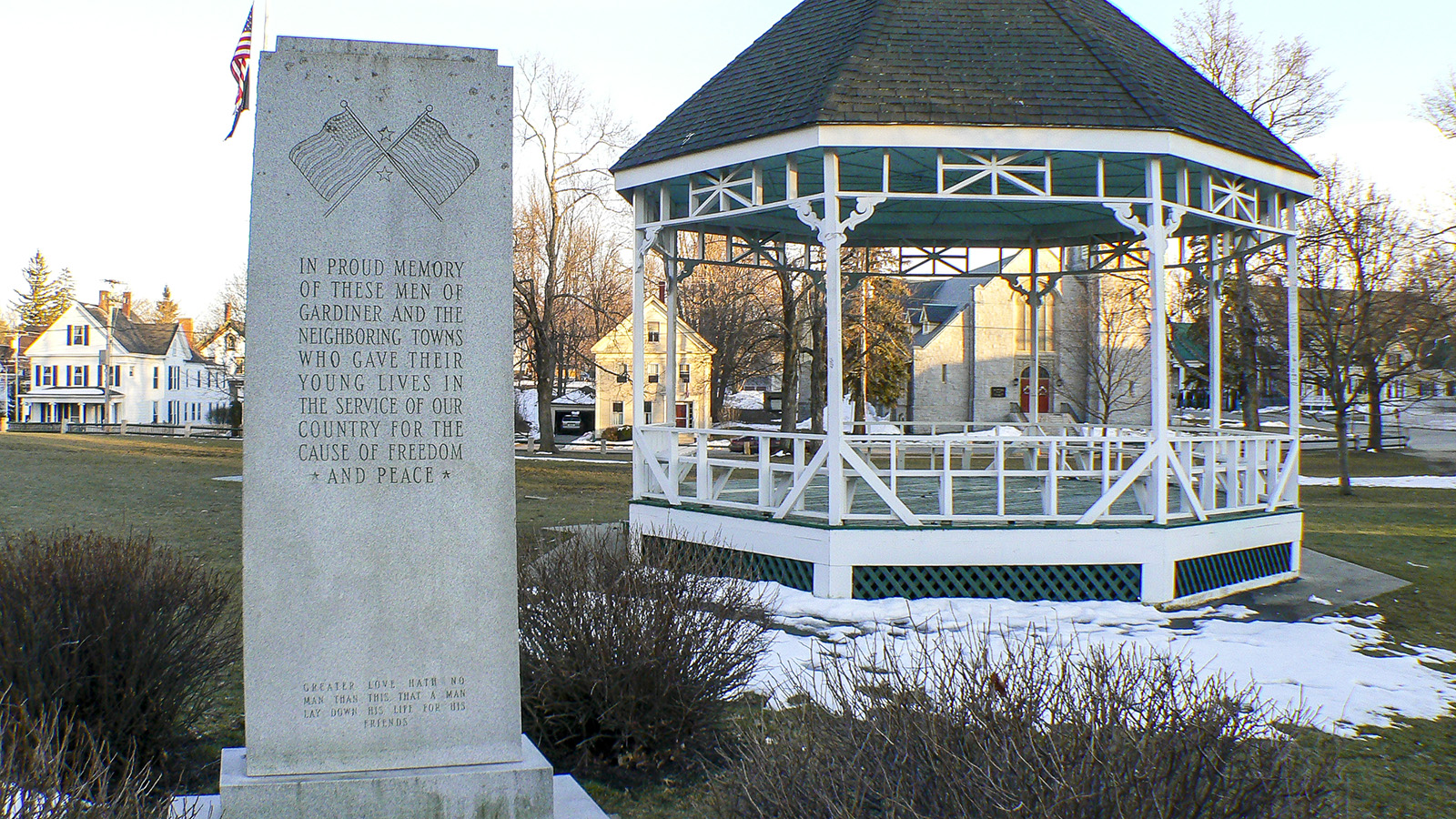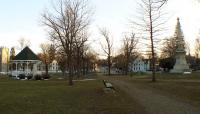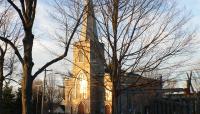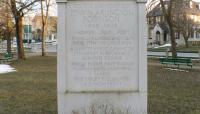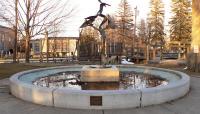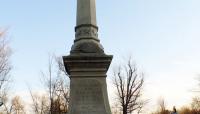Originally known as Brunswick Square, this common is one of Maine’s earliest designed landscapes. Robert Gardiner, who donated the property in 1824, sought to provide a public walk and parade ground while increasing the property value of his land around the park. He also wanted to improve the appearance of the town founded by his grandfather, requiring in his will that the town maintain existing rows of trees, separate walkways from roads with an ornamental fence, and add no permanent buildings. Should the town not abide by these stipulations, the three-acre site would revert to Gardiner’s heirs.
Early improvements included footpaths that cross the common and a fence made of granite bollards with wooden cross rails, which remains intact today. A Shingle-style bandstand built in the 1920s was replaced in the mid-1970s. Numerous memorials have also been added, including a Civil War memorial from 1875, the 20-foot-diameter Palmer fountain, the Stimson drinking fountain, a memorial to poet Edwin Arlington Robinson, and a war memorial honoring those lost between the Spanish-American and Vietnam wars. During World War II, the town donated the Palmer fountain’s Neptune statue and the Civil War monument’s iron fence and cannons as scrap metal; the fountain sculpture was later replaced with a contemporary design in the 1970s.
Today the common is bordered by churches, Greek Revival-style homes, a school, and a small commercial business. It is heavily used with a contemporary children’s playground, a perimeter walking path, and open space for public events.



